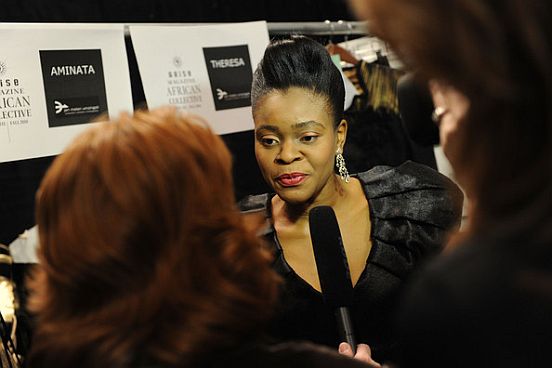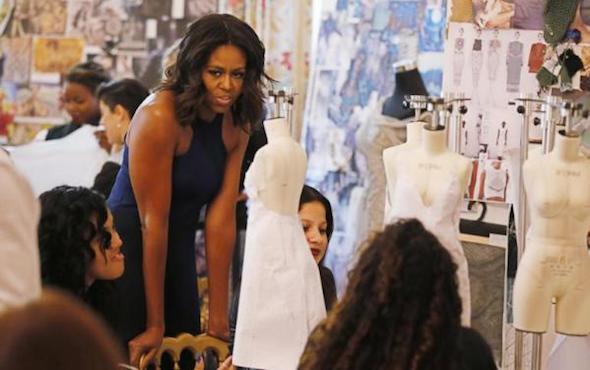Saving the planet is very much in vogue, and loudly echoed in the fashion industry all over the world among environmentalists, designers, brands, celebrities and also during the Nigeria fashion week 2011 and 2012. To some “sustainability” is confusing while others are tired and giving up as it seems unachievable. However, as complex as it may sound, it is simply consciously acting and making decisions in the fashion business of the present and the future.
The progress and potential of the Nigerian fashion industry cannot be overemphasized, and this is undeniably obvious in the past few years through increasing exposure to international market, interest in the younger generation, buying power, government and private individual’s investment, retail culture, fashion schools, social media and many more.
Armed with the vision to be Africa’s fashion leader and Lagos as the African fashion capital, and one of the sectors being depended on to bring to fulfillment; the realization of Nigeria’s dream of becoming Africa’s leading industrial nation. There is no doubt that the future is very bright for the industry considering the vast potential of creative people, high population, corresponding buying power, learning from the past mistake of the international fashion industry and of course the sudden interest in Africa by the world.
With this vision there have been some obvious plans to increase the ready to wear and fast fashion to meet up with the demand, encourage retail culture of locally made brands, reduce the importation of ready-made clothing (especially second hand which are more harmful to the environment and economy), increase local production, empower farmers financially and chemical wise (fertilizers)salvaging the textile industry by the government and many more .
However, with increased production comes higher environmental and health risks which if adequately planned for will be highly minimized and controlled; also learning from the impact of unethical or non-ecological fashion production in the western world until its advent in the late 90s and is rapidly becoming a movement and not just a trend.
Giving sustainable or Eco Fashion a thought in Nigerian fashion will empower designers and fashion brands to make informed decisions, demand acceptable standards while dealing with textile producers or clothing manufacturers in Nigeria or abroad.Also an average Nigerian in his/her purchase decisions will as well be empowered to contribute positively to the environment and future generations.
You might want to ask what ‘Sustainable Fashion’ is and how are you concerned?
Sustainability means using resources in a way that does not impoverish the planet for the next generation, recognizing the value of traditional craft skills and native craftspeople and connecting them to the world through their skills. Supporting traditional crafts and ensuring the continuation of their use, keeps the skills alive for future generations.
It is part of the larger trend of sustainable design where a product is created and produced with consideration to the environmental and social impact it may have throughout its total life span, including its “carbon footprint”. It is the process of reducing the environmental impact of all fashion business operations, throughout the supply chain.
According to Earth Pledge, a non-profit organization committed to promoting and supporting sustainable development, “At least 8,000 chemicals are used to turn raw materials into textiles and 25% of the world’s pesticides are used to grow non-organic cotton. This causes irreversible damage to people and the environment, and still two thirds of a garment’s carbon footprint will occur after it is purchased.
For example cotton is the most pesticide intensive crop in the world: these pesticides injure and kill many people every year. These chemicals typically remain in the fabric after finishing, and are released during the lifetime of the garments. (It is advisable to wash new cloth especially underwear’s before wearing them). Another surprising fact is that while it is illegal to feed the leaves, stems, and short fibers of cotton known as ‘gin trash’ to livestock, because of the concentrated levels of pesticide residue. Instead, this gin trash is used to make furniture, mattresses, tampons, swabs, and cotton balls!
Another aspect is the social impact of fashion activities, according to the International Labour Organization, there are 246 million child-workers (age 5 to 14) in the world today. The Asian-Pacific region exploits the most child labour, followed by sub-Saharan Africa, Latin America and the Caribbean”. This is ensuring people who work in the industry are well paid and slavery or child labour is avoided by the manufacturers and producers.
In other to keep up with the pace in the fashion world and achieve the vision of being African Fashion leader ,there is a need to take giant leaps by the Nigerian fashion industry and one of it is to incorporate sustainable fashion alongside developing production capacities to meet up with the demand of over 170million Nigerians. These will include increasing the capacity and wellbeing of the people and communities behind fashion (low education, poverty and exploitation of the human workforce behind fashion affects the growth of the industry); setting standards of fabric and textile production and most importantly increasing and sustaining local production which ultimately reduce carbon footprints.
–Omolade Oshinubi
Photocredit: Hesey Designs
Founded in 2007, Ladybrille® Magazine is a California based pioneer digital publication demystifying the image of Africans in the west through contemporary African fashion and celebrating the brilliant woman in business and leadership, with an emphasis on the African woman in the diaspora. Our coverage includes stories on capital, access to markets, expertise, hiring and retention, sales, marketing, and promotions.









Great post! I've learnt a lot from this, thanks! 🙂